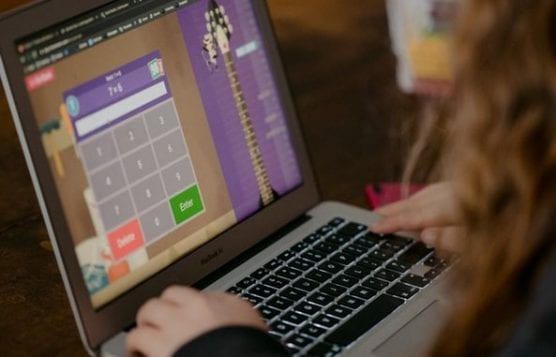SACRAMENTO — The California Department of Education has worked closely with technology companies to make available more than 500,000 more computing devices for California students in need, State Superintendent of Public Instruction Tony Thurmond announced.
“We cannot stop until we know we have leveled the playing field for every student in California by connecting them to the technology they need to succeed now, and in the years ahead,” Thurmond said.
“At a time when there is a worldwide shortage of devices, I want to thank these companies for prioritizing California students, and I am proud that we have been able to work together to give school districts a unique chance to equip every student in need with a computing device,” he said.
Thousands of devices will be made available within weeks as many schools either continue distance learning or transition to hybrid models that require some remote instruction.
As the 2020–2021 school year began, it became clear that worldwide disruptions to the technology supply chain created new challenges to school districts striving to fulfil their unmet computing needs, with hundreds of thousands of devices on backorder in August.
During a virtual news media briefing Wednesday, the State Superintendent said the CDE has worked directly with manufacturers and technology resellers to identify and prioritize available devices for California students. Companies working with the CDE to increase availability include ASUS, CDW, Dell, HP, Lenovo, Samsung, Staples, and Office Depot. These devices are on top of the hundreds of thousands of internet-enabled iPads prioritized for California students under a collaboration announced last month between the CDE, Apple and T-Mobile to connect up to 1 million students in need.
Schools can find regular updates on available devices on the CDE Securing Devices and Connectivity for Students web page.
Updates are sent to school districts weekly. Many devices are available for delivery now and more will be coming in the weeks and months ahead.
School districts this year received $5.3 billion in one-time funding in the state budget for schools to strengthen distance learning.
These funds—a rare opportunity for districts to make short and long-term investments in student technology—can be used immediately for purchasing needed devices. School districts are encouraged to order devices as soon as possible since they are in high demand across the country.
As communities across California respond to and recover from the devastation of multiple wildfires, the CDE has also helped secure and distribute hundreds of computing devices, hotspots, and accessories for students in schools that are preparing to resume learning in the coming weeks. As of Tuesday, at least 36 schools and 12,000 students were known to be in evacuation zones.
The State Superintendent and the Closing the Digital Divide Task Force, which Thurmond created and co-chairs, continues to focus on identifying solutions that expand reliable internet access to low-income students and households in underserved rural communities. Building on the work of State Superintendent Thurmond’s task force, the Governor in August signed an executive order directing state agencies across government to work toward expanding broadband access and bridging the digital divide.
Since April, the task force has worked with internet service providers to secure commitments to expand discounted service to households in need, and with the California Emerging Technology Fund to address low-income service programs.
The task force also has worked with the Department of Technology, the Department of Transportation, and emerging connectivity companies to address infrastructure barriers.
The CDE worked closely with the Governor’s Office and California Public Utilities Commission to secure $25 million in funds through the California Tele Connect Fund to subsidize service plans for hotspots loaned to students by school districts and $5 million in California Advanced Services Fund grants to school districts for devices and hotspots.
An archived broadcast of Wednesday’s full media check-in with the State Superintendent can be viewed on the CDE’s Facebook page.
Like this:
Like Loading...
Related





 Tweet This
Tweet This Facebook
Facebook Digg This
Digg This Bookmark
Bookmark Stumble
Stumble RSS
RSS



























REAL NAMES ONLY: All posters must use their real individual or business name. This applies equally to Twitter account holders who use a nickname.
0 Comments
You can be the first one to leave a comment.